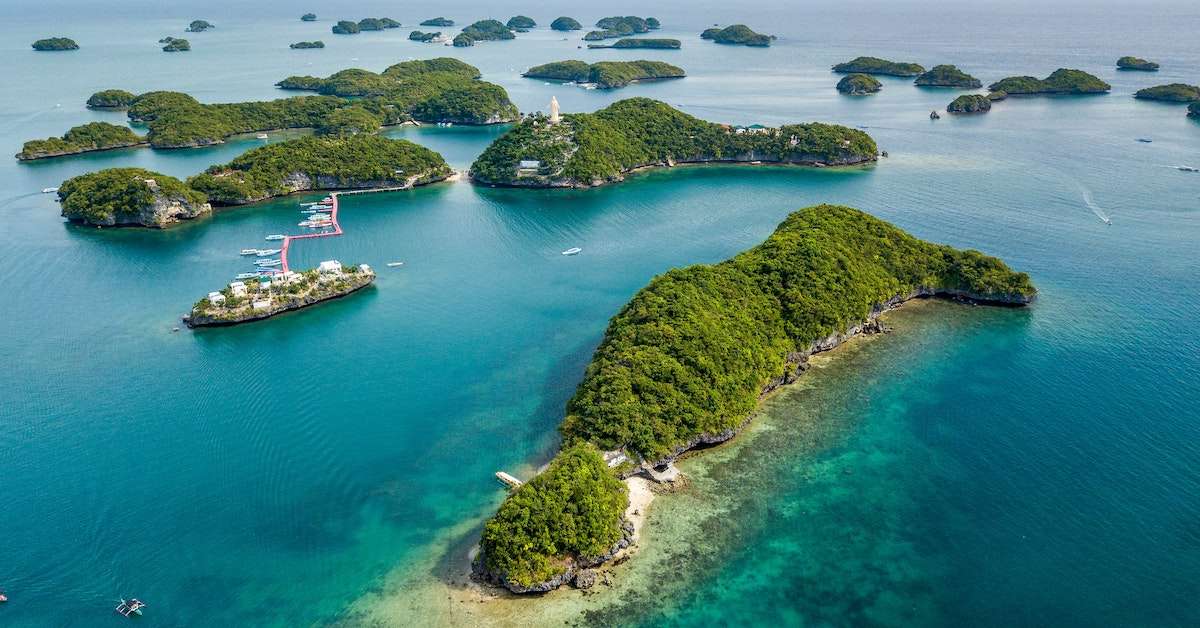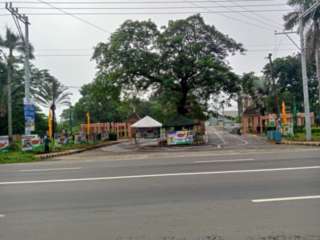About pangasinan
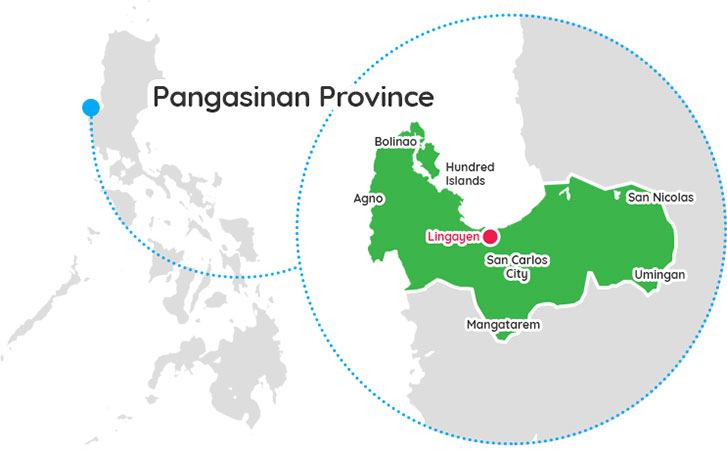
Pangasinan, officially the Province of Pangasinan, is a coastal province in the Philippines located in the Ilocos Region of Luzon. Its capital is Lingayen. Pangasinan is in the western area of Luzon along Lingayen Gulf and the South China Sea. It has a total land area of 5,451.01 square kilometres (2,104.65 sq mi). According to the 2020 census, it has a population of 3,163,190. The official number of registered voters in Pangasinan is 1,651,814. The western portion of the province is part of the homeland of the Sambal people, while the central and eastern portions are the homeland of the Pangasinan people. Due to ethnic migration, the Ilocano people settled in the province.
Pangasinan is the name of the province, the people and the spoken language. Indigenous Pangasinan speakers are estimated to number at least 2 million. The Pangasinan language, which is official in the province, is one of the officially recognized regional languages in the Philippines. In Pangasinan there were several ethnic groups that enriched the cultural fabric of the province. Almost all of the people are Pangasinans and the rest are descendants of Bolinao and Ilocano that settled the eastern and western parts of the province. Pangasinan is spoken as a second-language by many of the ethnic minorities in Pangasinan. The secondary ethnic groups are the Bolinao-speaking Zambals, and Ilocanos.
Popular tourist attractions in Pangasinan include the Hundred Islands National Park in Alaminos the white-sand beaches of Bolinao and Dasol. Dagupan is known for its Bangus Festival ("Milkfish Festival"). Pangasinan is also known for its mangoes and ceramic oven-baked Calasiao puto ("native rice cake"). Pangasinan occupies a strategic geo-political position in the central plain of Luzon. Pangasinan has been described as the gateway to northern Luzon.
The name Pangasinan means "place of salt" or "where salt is made"; it is derived from the prefix pang-, meaning "for", the root word asin, meaning "salt”, and suffix -an, signifying "location". The Spanish form of the province's name, Pangasinán, remains predominant, albeit without diacritics and so does its pronunciation: The province is a major producer of salt in the Philippines. Its major products include bagoong ("shrimp-paste") and alamang ("salted-krill").
Owing to its diverse cultural heritage rooted in centuries of glorious history and a way of life that is a delightful combination of tradition, innovation and creativity, the warm, polite, hospitable, hard-working and fun loving 2.65 million Pangasinenses (2007 census) enjoy the best of Provincial Philippines where you find both the familiar and unfamiliar world, abreast with modern technological times, but with a preserved vast panorama of outstanding natural beauty and unique attractions.
Pangasinan boasts of stretches of white, sandy beaches, verdant hills, scenic terrains, caves, waterfalls, ancient Hispanic churches, miraculous destinations for devotees, a vast coastline for fishing, water sports or leisurely walking along the Lingayen beach where one can get a glimpse of the world-famous Philippine sunset.
Being a gateway of sorts, the province is house to major and minor telecommunication companies, bus and transport services, regional and local publications, radio stations, television networks , cable services, hotel and restaurant chains, and a diversified variety of manufacturing and merchandising establishments.
History
Pangasinan, like the rest of the Philippine islands, was settled by Austronesian peoples by sea during the Austronesian expansion. They established settlements along the Lingayen Gulf and was part of the ancient Austronesian trade routes to India, China, and Japan, since at least the 8th century AD. The primary industry along the coastal areas was salt-making, which is the origin of the name "Pangasinan" ("place of salt-making"). The interior lands were called "Caboloan" ("place of bolo bamboos"), referring to the abundance of bolo bamboo (Gigantochloa levis).
Pangasinan is identified with "Feng-chia-hsi-lan" which appears in Ming Dynasty Chinese records. They are believed to have sent emissaries to China with symbolic "tributes" from 1403 to 1405, which was required to establish trade relations.
In the sixteenth-century Pangasinan was called the "Port of Japan" by the Spanish. The locals wore native apparel typical of other maritime Southeast Asian ethnic groups in addition to Japanese and Chinese silks. Even common people were clad in Chinese and Japanese cotton garments. They blackened their teeth and were disgusted by the white teeth of foreigners which were likened to that of animals. They used porcelain jars typical of Japanese and Chinese households. Japanese-style gunpowder weapons were encountered in naval battles in the area. In exchange for these goods traders from all over Asia would come to trade primarily for gold and slaves but also deerskins, civet and other local products. Other than a notably more extensive trade network with Japan and China they were culturally similar to other Luzon groups to the south.
Pangasinans were also described as a warlike people who were known for their resistance to Spanish conquest. Bishop Domingo Salazar described Pangasinans as the fiercest and cruelest in the land. They were untouched by Christianity but like Christians they used vintage wine in small quantities for sacramental practices. The church bragged that they, not the Spanish military, won the northern part of the Philippines for Spain. The church was strict with adulterers with the punishment being death for both parties. Pangasinans were known to take defeated Sambal, (Aeta) and Negrito warriors to sell as slaves to Chinese traders.
In 1324, Odoric of Pordenone, a Franciscan missionary from Friuli, Italy, is believed by some to have celebrated a Catholic Mass and baptized natives at Bolinao. In July 2007, memorial markers were set up in Bolinao to commemorate Odoric's journey based on a publication by Luigi Malamocco. The 1324 mass would have predated the mass held in 1521 by Ferdinand Magellan which is generally regarded as the first mass in the Philippines by some 197 years. However, historian William Henry Scott concluded after examining Oderic's writings about his travels that he likely never set foot on Philippine soil and if he did there is no reason to think that he celebrated mass.
On April 27, 1565, the Spanish conquistador Miguel López de Legazpi arrived in the Philippine islands with about 500 soldiers and established a Spanish settlement. On May 24, 1570, the Spanish forces defeated Rajah Sulayman and other rulers of Manila and later declared Manila as the new capital of the Spanish East Indies. After securing Manila the Spanish forces continued to conquer the rest of the island of Luzon including Pangasinan.
In 1571, the Spanish conquest of Pangasinan began with an expedition by the Spanish conquistador Martín de Goiti who came from the Spanish settlement in Manila through Pampanga. About a year later another Spanish conquistador, Juan de Salcedo, sailed to Lingayen Gulf and landed at the mouth of the Agno River. Limahong, a Chinese pirate, fled to Pangasinan after his fleet was driven away from Manila in 1574. Limahong failed to establish a colony in Pangasinan, as an army led by Juan de Salcedo chased him out of Pangasinan after a seven-month siege.
Pangasinan as a province dates back to an administrative and judicial district, with Lingayen as the capital, as early as 1580 but its territorial boundaries were first delineated in 1611. Lingayen has remained the capital of the province except for a brief period during the revolutionary Era when San Carlos served as temporary administrative headquarters and during the slightly longer Japanese Occupation when Dagupan was the capital.
The province of Pangasinan was formerly classified as an alcaldía mayor de término or first class civil province during the Spanish regime and has remained a first class-A province up to the present day. Its territorial jurisdiction once included most of the entire province of Zambales and portions of what are now Tarlac and La Union provinces.
Andres Malong, a native chief of the town of Binalatongan (now named San Carlos City), liberated the province from Spanish rule in December 1660. The people of Pangasinan proclaimed Andres Malong Ari na Pangasinan ("King of Pangasinan"). Pangasinan armies attempted to liberate the neighboring provinces of Pampanga and Ilocos, but were repelled by a Spanish-led coalition of loyalist tribal warriors and mercenaries. In February 1661, the newly independent Kingdom of Pangasinan fell to the Captaincy General of the Philippines.
On November 3, 1762, the people of Pangasinan proclaimed independence from Spain after a rebellion led by Juan de la Cruz Palaris. The Pangasinan revolt was sparked by news that Manila had fallen to the British on October 6, 1762. The Traité de Paris ended the Seven Years' War between Britain, France and Spain on March 1, 1763. On January 16, 1765, Juan de la Cruz Palaris was captured and Pangasinan independence was lost again.
The Katipunan, a nationalist secret society, was founded on July 7, 1892, with the aim of uniting the peoples of the Philippines in the fight for independence and religious freedom. The Philippine Revolution began on August 26, 1896, and was led by the leader of the Katipunan, Andres Bonifacio. On November 18, 1897, a Katipunan council was formed in western Pangasinan with Presidente Generalisimo Roman Manalang and General Mauro Ortiz. General Emilio Aguinaldo proclaimed Philippine independence on June 12, 1898. Dagupan, the major commercial center of Pangasinan, was surrounded by Katipunan forces on July 18, 1898. The Battle of Dagupan lasted from July 18 to 23 of that year with the surrender of 1,500 Spanish soldiers under Commander Federico J. Ceballos and Governor Joaquin de Orengochea.
The Battle of Dagupan was fought by local Katipuneros under the command of General Francisco Makabulos and the last remnants of the once mighty Spanish Army under General Francisco Ceballos. Three local heroes fought in the five-day battle, Don Daniel Maramba of Santa Barbara, Don Vicente Prado of San Jacinto and Don Juan Quezada of Dagupan. Their armies amassed in Dagupan making a last stand at the brick-walled Catholic Church.
Maramba led the liberation of the town of Santa Barbara on March 7, 1898, following a signal for simultaneous attack from Makabulos. Hearing that Santa Barbara fell to the rebels Spanish forces in Dagupan attempted to retake the town but were repelled by Maramba's forces. After the setback the Spanish decided to concentrate their forces in Lingayen in order to protect the provincial capital. This allowed Maramba to expand his operations to include Malasiqui, Urdaneta and Mapandan which he defeated in succession. He then defeated the town of Mangaldan before proceeding to the last Spanish garrison in Dagupan. On March 7, 1898, rebels under the command of Prado and Quesada attacked convents in the province of Zambales which now constitute western Pangasinan.
Attacked and brought under Filipino control were Alaminos, Agno, Anda, Alos, Bani, Balincaguin, Bolinao, Dasol, Eguia and Potot. The revolt then spread to Labrador, Sual, Salasa and many other towns in the west. The towns of Sual, Labrador, Lingayen, Salasa and Bayambang were occupied first by the forces of Prado and Quesada before they attacked Dagupan.
On April 17, 1898, General Makabulos appointed Prado to politico-military governor of Pangasinan with Quesada as his second in command. In May 1898 General Emilio Aguinaldo returned from his exile in Hong Kong following the signing of the Pact of Biac-na-Bato in December 1897. Aguinaldo's return gave renewed the flames of the revolution. On June 3, 1898, General Makabulos entered Tarlac.
So successful were the Katipunan in their many pitched battles against Spanish forces that on June 30, 1898, Spanish authorities decided to evacuate all forces to Dagupan for a last stand against the rebels. They were ordered to go to Dagupan were all civilian and military personnel, including members of the volunteer locales of towns not yet in rebel hands. Those who heeded this order were the volunteer forces of Mangaldan, San Jacinto, Pozorrubio, Manaoag, and Villasis. Among the items brought to Dagupan was the image of the Most Holy Rosary of the Virgin of Manaoag which was the patron saint of Pangasinan.
The siege began when the forces of Maramba and Prado converged in Dagupan on July 18, 1898. The arrival of General Makabulos strengthened the rebel forces until the Spanish, holed up inside the Catholic Church, waved the flag of surrender five days later. The poorly armed Filipino rebels were no match for the Spanish and loyal Filipino soldiers holed inside the Church. The tempo of battle changed when the attackers under the command of Don Vicente Prado devised a crude means of protection to shield them from Spanish fire while advancing. They used trunks of bananas bundled up in sawali which enabled them to move upon the Church.
On November 30, 1903, several municipalities from northern Zambales including Agno, Alaminos, Anda, Bani, Bolinao, Burgos, Dasol, Infanta and Mabini were ceded to Pangasinan by the American colonial government. These municipalities were a part of the homeland of the Sambal people who wanted to remain within the Zambales province. This 1903 colonial decision has yet to be reverted.
Pangasinan and other parts of the Spanish East Indies were ceded to the Americans after the Treaty of Paris, which ended the Spanish–American War. During the Philippine–American War Lieutenant Col. José Torres Bugallón of Salasa fought together with Gen. Antonio Luna to defend the First Philippine Republic against American colonization in Northern Luzon. Bugallon was killed in battle on February 5, 1899. The First Philippine Republic was abolished in 1901. In 1907 the Philippine Assembly was established and for the first time five residents of Pangasinan were elected as its district representatives. In 1921, Mauro Navarro, representing Pangasinan in the Philippine Assembly, sponsored a law to rename the town of Salasa to Bugallon in honor of General Bugallon.
Manuel L. Quezon was inaugurated as the first president of the Commonwealth of the Philippines with collaboration from the United States of America on November 15, 1935.
The 21st Infantry Division were stationed in Pangasinan during the pre-World War II era. Anti-Japanese Imperial military operations included the fall of Bataan and Corregidor along with aiding the USAFFE ground force from January to May 1942 and the Japanese Insurgencies and Allied Liberation in Pangasinan from 1942 to 1945.
Members from pangasinan
Listings in pangasinan
More Provinces
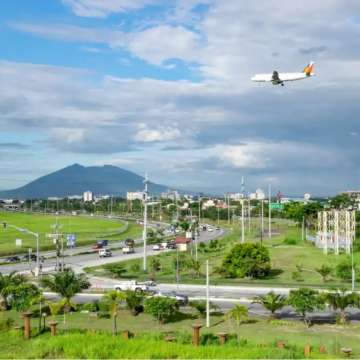
pampanga
Pampanga is a province in the Central Luzon region of the Philippines. Its capital is the City of San Fernando. The name La Pampanga was given by the Spaniards, who encountered natives living along the banks (pampáng) of the Pampanga River. Its creation in 1571 makes it the first Spanish ...read more
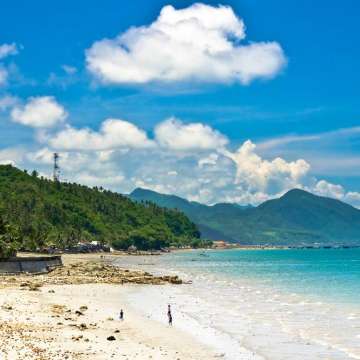
quezon
Quezon is a province in the Philippines located in the Calabarzon region on Luzon. Kaliraya/Kalilayan was the first known name of the province upon its creation in 1591. Around the middle of the 18th century, it was changed to Tayabas. In recognition of the second president of the Philippines, Manuel ...read more

